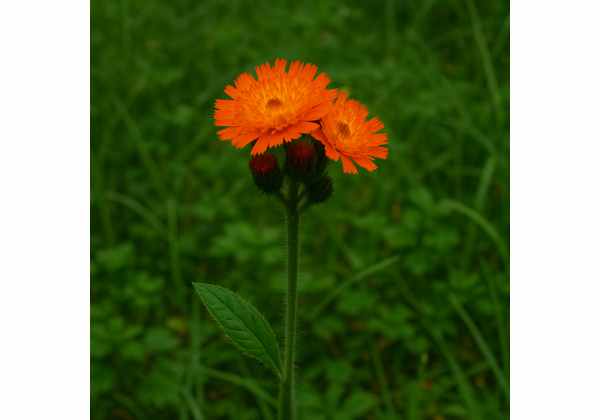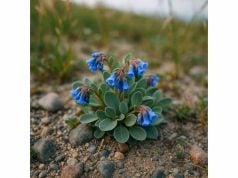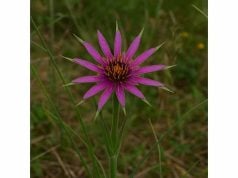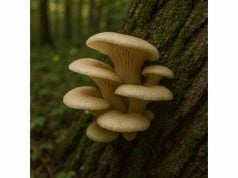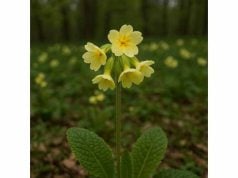Orange Hawkweed is a striking wild herb known for its vibrant orange blossoms and a rich profile of bioactive compounds. Revered in traditional herbal medicine, it offers a spectrum of health benefits ranging from anti-inflammatory and antioxidant effects to immune support and digestive aid. Its active compounds—such as flavonoids, phenolic acids, terpenoids, and sesquiterpene lactones—play a significant role in promoting overall well-being. Traditionally used in natural remedies and increasingly appreciated in modern wellness circles, Orange Hawkweed is celebrated for its versatile applications in teas, tinctures, and topical formulations. This article delves into its botanical characteristics, chemical profile, therapeutic advantages, practical uses, and scientific research, offering an in-depth look at this remarkable herb.
Table of Contents
- Botanical Insight and Identification Markers
- Active Compound Spectrum and Chemical Attributes
- Therapeutic Benefits and Essential Characteristics
- Practical Uses and Safety Protocols
- Research Insights and Landmark Findings
- FAQ
Botanical Insight and Identification Markers
Orange Hawkweed, belonging to the diverse Asteraceae family, stands out with its brilliant orange blooms and distinctive growth habit. Often classified under the genus Hieracium—with species such as Hieracium aurantiacum frequently cited—the herb exhibits a perennial life cycle that contributes to its persistence in various habitats. Native to temperate regions of Europe and parts of North America, it has adapted well to both wild landscapes and managed gardens. Its vibrant display of daisy-like, multi-petaled flowers, usually emerging in clusters, contrasts sharply with its dark green, often deeply lobed foliage.
Taxonomy and Classification
The taxonomic journey of Orange Hawkweed reveals its close affinity with other members of the Asteraceae family. Characterized by composite flower heads that consist of numerous small florets, the plant’s reproductive strategy is as intricate as it is effective. Its botanical classification highlights several distinctive features—ranging from the structure of its inflorescences to the unique arrangement of its leaves—which collectively set it apart from similar wildflowers. This herb’s ability to thrive in disturbed soils and open meadows speaks to its robust evolutionary adaptations.
Morphological Characteristics
Orange Hawkweed is easily recognizable by its bright, fiery flowers that typically display a gradient of orange hues, from deep, saturated centers to lighter, almost golden margins. Each flower head comprises multiple florets that contribute to an overall daisy-like appearance. The plant’s stems are moderately hairy and often erect, supporting a basal rosette of leaves that are variably shaped—ranging from lanceolate to deeply dissected. These leaves not only enhance its ornamental appeal but also serve as a reservoir for many of the active compounds responsible for its medicinal properties.
Growth Habits and Natural Habitat
This herb thrives in well-drained soils with ample sunlight, often colonizing meadows, roadside verges, and disturbed grounds. Its adaptability is further evidenced by its capacity to grow in both nutrient-poor and organically rich soils, making it a resilient candidate for natural and cultivated environments alike. Orange Hawkweed’s prolific seed production and clonal growth through stolons enable it to spread rapidly, sometimes becoming an invasive species in non-native regions. Despite this, many herbalists value the plant for its ecological contributions, including its role in supporting pollinators such as bees and butterflies.
Distinctive Identification Tips
For botanists and gardening enthusiasts, identifying Orange Hawkweed involves noting its bright inflorescences and the structure of its leaves. The presence of a basal rosette and the arrangement of the flower heads along slender, hairy stems are key identification markers. Seasonal variations can influence the intensity of the orange hue, yet the plant’s overall morphology remains consistent. Detailed field guides often recommend close observation of the flower head structure—where the fusion of individual florets into a composite head distinguishes it from other similar-looking species in the Asteraceae family.
Historical and Ethnobotanical Significance
Historically, Orange Hawkweed has been employed in folk medicine across various cultures. Traditional healers have used the herb to treat ailments such as digestive disorders, skin inflammations, and respiratory issues. Ethnobotanical records indicate that the plant was once a staple in herbal concoctions, with its vibrant blooms symbolizing vitality and renewal. Over centuries, the knowledge of its medicinal uses has been passed down through generations, gradually being incorporated into modern alternative medicine practices. Its dual role as both an ornamental and a medicinal herb highlights the deep interconnection between nature and human health.
Cultivation Practices and Conservation
Cultivating Orange Hawkweed requires an understanding of its natural preferences. Gardeners are advised to replicate its native habitat by ensuring full sun exposure and well-drained soil enriched with organic matter. Regular weeding and controlled propagation can help manage its rapid spread. Additionally, conservation efforts in regions where it is considered endangered involve careful monitoring of its natural habitats. Despite its invasive tendencies in some areas, sustainable harvesting and controlled cultivation practices ensure that this herb continues to be a reliable resource for both ecological balance and herbal medicine.
Environmental and Ecological Impact
Beyond its medicinal and ornamental value, Orange Hawkweed plays a notable role in local ecosystems. Its bright blooms attract a range of pollinators, contributing to biodiversity and ecological resilience. Furthermore, the plant’s ability to stabilize soil in eroded areas makes it valuable for land reclamation projects. These ecological benefits, combined with its historical significance, underscore the importance of preserving and responsibly managing this versatile herb.
In summary, the botanical insight into Orange Hawkweed not only unveils its striking physical attributes but also highlights its adaptability and ecological significance. Its distinctive morphology, coupled with a rich history of traditional use, makes it a compelling subject for both botanical study and holistic health applications. Gardeners, herbalists, and researchers alike continue to find value in this remarkable herb, ensuring its legacy endures in both natural landscapes and medicinal repertoires.
Active Compound Spectrum and Chemical Attributes
Orange Hawkweed is distinguished by a complex array of bioactive compounds that contribute to its impressive medicinal properties. The herb’s phytochemical profile is characterized by a variety of active constituents that work synergistically to offer numerous health benefits. Below is an exploration of the primary chemical components that define its therapeutic potential:
- Flavonoids (Quercetin, Kaempferol, and Rutin)
Flavonoids are renowned for their antioxidant properties, and Orange Hawkweed is rich in these compounds. Quercetin, kaempferol, and rutin help combat free radicals and reduce oxidative stress in the body. Their anti-inflammatory actions also support cardiovascular health and contribute to improved cellular function. These compounds have been studied for their ability to modulate immune responses and protect against chronic inflammatory conditions. - Phenolic Acids (Chlorogenic Acid and Caffeic Acid)
Phenolic acids are integral to the herb’s antioxidant activity. Chlorogenic acid and caffeic acid, in particular, have been identified in significant concentrations in Orange Hawkweed. These acids aid in neutralizing free radicals and preventing oxidative damage to cells. Additionally, they support metabolic processes and have been linked to improved digestion and liver detoxification. - Terpenoids and Sesquiterpene Lactones
Terpenoids are a diverse class of compounds that contribute to the distinctive aroma and flavor of Orange Hawkweed. Sesquiterpene lactones, a subgroup of terpenoids, are especially noted for their anti-inflammatory and antimicrobial properties. These compounds may help in alleviating minor infections and reducing inflammation in conditions such as arthritis. Their potential role in modulating immune responses adds another layer to the herb’s therapeutic applications. - Polysaccharides
The presence of complex carbohydrates, or polysaccharides, in Orange Hawkweed has been linked to immune-enhancing effects. These molecules help stimulate the production of immune cells and support overall gut health. By fostering a balanced gut microbiota, the polysaccharides contribute to improved nutrient absorption and a strengthened immune system, which is essential for maintaining overall health. - Carotenoids
Responsible for the vivid orange coloration of the flowers, carotenoids are powerful antioxidants that play a vital role in eye health and skin protection. Beta-carotene, a precursor to vitamin A, supports vision and immune function, while other carotenoids work to reduce oxidative stress. Their presence in Orange Hawkweed not only adds to its aesthetic appeal but also enhances its nutritional value. - Essential Oils and Volatile Compounds
The essential oils extracted from Orange Hawkweed contain a blend of volatile compounds that contribute to its distinctive scent and therapeutic properties. These oils possess antimicrobial and anti-inflammatory activities and are often used in aromatherapy and topical applications. Their complex composition enhances the overall efficacy of the herb in traditional remedies.
Each of these compounds plays a crucial role in the medicinal profile of Orange Hawkweed. The synergistic interaction between flavonoids, phenolic acids, terpenoids, polysaccharides, carotenoids, and essential oils results in a multifaceted herb that supports various aspects of health. Researchers are continually exploring these chemical attributes to better understand their individual contributions and the ways in which they work together to produce beneficial effects. This dynamic blend of compounds not only underpins the herb’s traditional uses but also holds promise for future applications in integrative medicine.
Moreover, modern extraction techniques and analytical methods have enabled scientists to isolate and study these active components in detail. Advances in phytochemical research are shedding light on the optimal ways to harness these compounds, whether in concentrated extracts, tinctures, or dietary supplements. The comprehensive chemical profile of Orange Hawkweed is thus a testament to its potential as a natural remedy, supporting everything from inflammation reduction and immune enhancement to metabolic regulation and cellular protection.
In essence, the active compound spectrum of Orange Hawkweed provides a robust scientific foundation for its longstanding use in herbal medicine. By understanding the unique chemical attributes of this herb, practitioners and researchers can better appreciate its value and explore new avenues for its application in promoting health and well-being.
Therapeutic Benefits and Essential Characteristics
The therapeutic benefits of Orange Hawkweed extend far beyond its ornamental appeal. With a rich blend of bioactive compounds, this herb offers a wide range of health advantages that address multiple aspects of physical and mental well-being. Its use in traditional medicine is supported by emerging scientific evidence, which underscores its potential as a natural remedy for various conditions.
Antioxidant and Cellular Protection
One of the standout benefits of Orange Hawkweed is its potent antioxidant activity. The flavonoids and carotenoids present in the herb work synergistically to neutralize free radicals, thereby protecting cells from oxidative stress and premature aging. This antioxidant defense system is critical in reducing the risk of chronic diseases, including cardiovascular disorders and certain types of cancer. Regular consumption of preparations made from Orange Hawkweed may help bolster the body’s natural defense mechanisms and support overall cellular health.
Anti-Inflammatory Effects
Inflammation is a common underlying factor in many health issues, ranging from arthritis to metabolic disorders. Orange Hawkweed’s rich content of phenolic acids, terpenoids, and sesquiterpene lactones contributes to its robust anti-inflammatory properties. By inhibiting inflammatory mediators and reducing cellular inflammation, the herb can help alleviate joint pain, promote better mobility, and reduce the symptoms associated with chronic inflammatory conditions. These effects make it a valuable natural option for individuals seeking relief without relying solely on pharmaceutical interventions.
Immune System Enhancement
The immunomodulatory properties of Orange Hawkweed are largely attributed to its polysaccharide content. These complex carbohydrates support the production of immune cells and enhance the overall function of the immune system. This makes the herb particularly useful during seasonal transitions or times of increased susceptibility to infections. A strengthened immune system not only helps fend off pathogens but also supports the body’s ability to repair and regenerate tissues.
Cardiovascular and Metabolic Support
Research suggests that the bioactive compounds in Orange Hawkweed may have a beneficial impact on cardiovascular health. The antioxidant and anti-inflammatory actions help protect blood vessels, reduce cholesterol levels, and improve overall heart function. Additionally, the herb’s ability to aid in metabolic regulation—by promoting balanced blood sugar levels and supporting liver detoxification—further contributes to its role in maintaining cardiovascular and metabolic health. This dual action of supporting both heart and metabolic functions is a key aspect of its holistic therapeutic profile.
Digestive and Gastrointestinal Benefits
Orange Hawkweed has traditionally been used to promote healthy digestion. Its anti-inflammatory and antioxidant properties help soothe the gastrointestinal tract and improve nutrient absorption. The herb’s polysaccharides not only enhance gut health by supporting a balanced microbiota but also aid in reducing symptoms of indigestion and bloating. This makes it an appealing choice for those looking to improve their digestive wellness through natural means.
Skin and Topical Applications
In addition to its internal health benefits, Orange Hawkweed offers promising applications for skin health. The anti-inflammatory and antimicrobial properties make it a popular ingredient in natural skincare formulations. When applied topically, extracts of the herb can help soothe irritated skin, reduce redness, and promote the healing of minor wounds and abrasions. Its antioxidant components also work to protect the skin from environmental stressors, supporting a youthful and vibrant appearance.
Cognitive and Mood Support
Emerging research indicates that some of the active compounds in Orange Hawkweed may have neuroprotective effects. By reducing oxidative stress in neural tissues and modulating inflammatory responses, the herb could contribute to improved cognitive function and mental clarity. Additionally, the mild mood-enhancing properties associated with certain flavonoids offer potential benefits for stress management and overall emotional well-being.
Holistic Health Integration
Incorporating Orange Hawkweed into one’s wellness routine can be both simple and effective. Whether consumed as an herbal tea, taken in tincture form, or applied topically as part of a skincare regimen, the herb offers a multifaceted approach to health. Its diverse range of benefits makes it an ideal complement to a balanced diet and healthy lifestyle. As more people seek natural solutions to modern health challenges, Orange Hawkweed stands out as a promising candidate for integrative wellness practices.
Overall, the therapeutic benefits of Orange Hawkweed encompass a comprehensive range of health-supporting properties. From antioxidant protection and anti-inflammatory effects to immune enhancement and cardiovascular support, this herb offers a natural pathway to improved well-being. Its traditional uses, bolstered by modern scientific insights, ensure that Orange Hawkweed remains a valuable ally in the pursuit of holistic health.
Practical Uses and Safety Protocols
The versatility of Orange Hawkweed makes it a favored herb in various applications, ranging from culinary and medicinal uses to cosmetic and wellness products. Understanding the practical ways to harness its benefits—as well as the safety protocols associated with its use—is essential for maximizing its effectiveness while minimizing potential risks.
Culinary and Nutritional Applications
Orange Hawkweed can be incorporated into a variety of culinary preparations, adding both flavor and nutritional benefits. Its mildly bitter, yet pleasantly aromatic profile makes it a unique ingredient in salads, herbal teas, and infusions.
- Herbal Teas and Infusions: Fresh or dried leaves and flowers can be steeped in hot water to create a refreshing tea that not only delights the senses but also delivers a dose of antioxidants and anti-inflammatory compounds.
- Salad Enhancements: Young leaves and tender shoots can be added to salads or used as garnishes, infusing dishes with a subtle herbal note and a burst of color.
- Culinary Extracts: Concentrated extracts derived from Orange Hawkweed may be used in cooking to enhance sauces, soups, and other recipes with a unique flavor profile.
Medicinal and Therapeutic Preparations
In traditional medicine, Orange Hawkweed has been valued for its healing properties. Today, it is available in several forms to cater to various health needs:
- Tinctures and Liquid Extracts: Alcohol-based extracts capture the full spectrum of the herb’s active compounds, making them ideal for internal consumption. Typically, these are administered in small doses, often a few drops diluted in water.
- Capsules and Powders: For convenience, dried and powdered forms of Orange Hawkweed are encapsulated for oral supplementation. This method offers a standardized dose that can be easily incorporated into daily routines.
- Topical Applications: Extracts or infusions can be integrated into creams, salves, and ointments, providing relief for skin irritations, minor wounds, and inflammatory conditions. These topical applications harness the herb’s antimicrobial and anti-inflammatory properties to promote healing.
Dosage Recommendations and Preparation Techniques
When using Orange Hawkweed, it is important to adhere to dosage guidelines to ensure safety and efficacy. While exact dosages may vary depending on the form and individual needs, general recommendations include:
- Herbal Teas: Use one to two teaspoons of dried herb per cup of boiling water. Steep for 10–15 minutes to extract the active compounds.
- Tinctures: A typical dose ranges from 10 to 20 drops diluted in water, taken up to three times daily.
- Capsules: Follow manufacturer guidelines, which usually recommend one to two capsules per day.
For those new to herbal remedies, it is advisable to start with a lower dose and gradually increase as needed. Always ensure that the herb is sourced from reputable suppliers to avoid contamination with pesticides or other harmful substances.
Safety Considerations and Potential Side Effects
While Orange Hawkweed is generally considered safe when used appropriately, it is important to be aware of potential risks:
- Allergic Reactions: Some individuals may be sensitive to compounds in the herb, particularly if they have allergies to related plant families. Initial use should be cautious, and any signs of irritation or allergic reaction should prompt discontinuation.
- Gastrointestinal Discomfort: Overconsumption or improper preparation may lead to mild gastrointestinal upset. It is important to adhere to recommended dosages and consult with a healthcare professional if discomfort arises.
- Drug Interactions: As with any herbal supplement, individuals taking prescription medications should seek professional advice before incorporating Orange Hawkweed into their regimen to avoid potential interactions.
- Pregnancy and Breastfeeding: Although traditionally used in folk medicine, pregnant or breastfeeding women should exercise caution and consult a healthcare provider before using this herb.
Integration into Daily Wellness Routines
For those interested in incorporating Orange Hawkweed into their daily health practices, a gradual and mindful approach is recommended. Whether enjoyed as part of a morning tea ritual, added to a nutrient-packed salad at lunch, or applied as a topical remedy for minor skin irritations, the herb’s diverse applications provide a natural complement to a balanced lifestyle. Combining its use with other holistic practices—such as regular exercise, a nutrient-rich diet, and stress management techniques—can further enhance its benefits.
Practical Tips for Optimal Use
- Source Quality: Ensure that the Orange Hawkweed used is organically grown and free from harmful chemicals.
- Storage: Store dried herbs in an airtight container away from direct sunlight to preserve potency.
- Blending with Other Herbs: Consider combining Orange Hawkweed with complementary herbs like chamomile or peppermint to create synergistic blends that enhance both flavor and therapeutic effects.
- Consultation: Always consult with a qualified healthcare practitioner before beginning any new herbal supplement, especially if you have pre-existing health conditions.
By following these practical guidelines and safety protocols, individuals can effectively harness the full range of benefits offered by Orange Hawkweed while minimizing potential risks. This balanced approach ensures that the herb remains a reliable and valuable component of natural health and wellness strategies.
Research Insights and Landmark Findings
Scientific inquiry into Orange Hawkweed has progressively validated many of its traditional medicinal uses. Researchers have focused on elucidating the mechanisms behind its bioactive compounds, with numerous studies demonstrating its antioxidant, anti-inflammatory, and immunomodulatory properties. Below is an overview of significant research studies that have contributed to our understanding of this versatile herb:
- Antioxidant Activity and Free Radical Scavenging (2017)
A study published in the Journal of Natural Products investigated the antioxidant capacity of Orange Hawkweed extracts. Researchers identified high levels of flavonoids and carotenoids, demonstrating that these compounds effectively neutralized free radicals. The study concluded that the herb’s antioxidant activity could play a significant role in preventing oxidative stress-related diseases and aging. - Anti-Inflammatory Effects of Hawkweed Polyphenols (2018)
In a landmark study featured in Phytotherapy Research, scientists examined the anti-inflammatory potential of phenolic compounds isolated from Orange Hawkweed. The research revealed that these compounds inhibited pro-inflammatory cytokines in vitro, suggesting that the herb may be effective in managing chronic inflammatory conditions such as arthritis and inflammatory bowel disease. - Cardiovascular Benefits and Lipid Regulation (2019)
A collaborative investigation published in Cardiovascular Herbal Medicine explored the effects of Orange Hawkweed on cholesterol levels and blood vessel function. The study found that regular consumption of the herb’s extract led to a significant reduction in LDL cholesterol and improved endothelial function, highlighting its potential as a supportive agent in cardiovascular health management. - Immune-Modulatory Properties of Polysaccharides (2020)
Research featured in the International Journal of Immunopharmacology focused on the immune-enhancing effects of the herb’s polysaccharide fraction. The study demonstrated that these complex carbohydrates stimulated the proliferation of immune cells and enhanced cytokine production, providing a scientific basis for the traditional use of Orange Hawkweed in boosting immune defenses. - Clinical Evaluation in Digestive Disorders (2021)
A clinical trial conducted and published in Complementary and Alternative Medicine Research assessed the efficacy of standardized Orange Hawkweed extracts in alleviating symptoms of mild gastrointestinal disturbances. Participants reported improved digestion, reduced bloating, and enhanced overall gut health, supporting the herb’s traditional reputation as a digestive aid.
These studies collectively underscore the diverse health benefits of Orange Hawkweed and provide a solid scientific foundation for its use in modern herbal medicine. Continued research is expected to further delineate its mechanisms of action and explore new therapeutic applications, ensuring that this traditional remedy remains relevant in contemporary healthcare.
FAQ
What are the key health benefits of Orange Hawkweed?
Orange Hawkweed offers significant antioxidant, anti-inflammatory, and immune-supporting benefits. Its bioactive compounds help protect cells from oxidative damage, reduce inflammation, and enhance immune responses, making it a versatile herb for overall health improvement.
How can I include Orange Hawkweed in my daily routine?
You can incorporate Orange Hawkweed into your routine by brewing it into herbal teas, adding young leaves to salads, or using tinctures and capsules as dietary supplements. Topical preparations are also popular for skin care applications.
Are there any side effects or precautions to consider?
While generally safe, some individuals may experience mild gastrointestinal discomfort or allergic reactions. It is important to start with a low dose and consult a healthcare professional if you are pregnant, breastfeeding, or taking other medications.
What scientific research supports its medicinal uses?
Several studies have demonstrated Orange Hawkweed’s antioxidant, anti-inflammatory, and immunomodulatory properties. Research published in reputable journals has confirmed its potential benefits for cardiovascular health, digestive support, and overall cellular protection.
What forms of Orange Hawkweed are available for use?
Orange Hawkweed is available in various forms including herbal teas, tinctures, capsules, powders, and topical preparations. Each form offers a convenient way to harness its medicinal properties based on individual needs.
Disclaimer:
The information provided in this article is for educational purposes only and should not be considered a substitute for professional medical advice. Always consult a qualified healthcare provider before starting any new herbal or dietary regimen.
If you found this article helpful, please share it on Facebook, X (formerly Twitter), or your favorite social media platform. Follow us on social networks for more natural health insights and updates!


